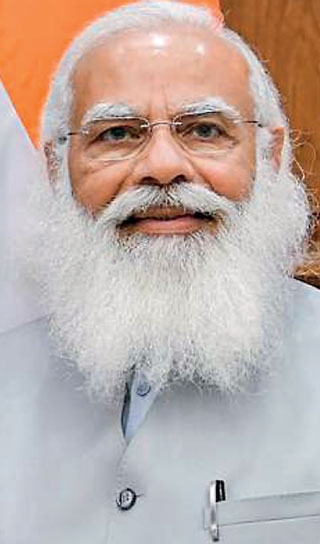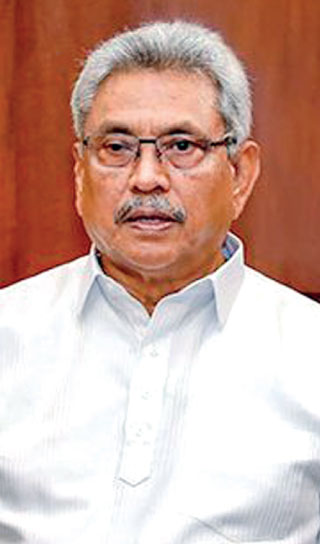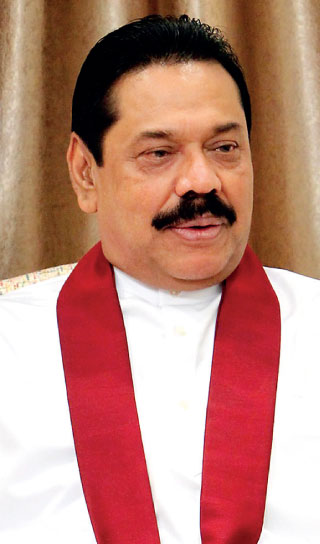Monday Dec 08, 2025
Monday Dec 08, 2025
Monday, 7 March 2022 03:25 - - {{hitsCtrl.values.hits}}

Indian Prime Minister Narendra Modi

President Gotabaya Rajapaksa

Prime Minister Mahinda Rajapaksa
|
 An Indian Prime Minister visiting Sri Lanka
An Indian Prime Minister visiting Sri Lanka
Indian Prime Minister Narendra Modi is due to visit Sri Lanka in a few days. If not cancelled due to the frightening events that are taking place in Europe consequent on Russia’s invasion of Ukraine, this will be a reality. Though Sri Lanka is located some 42 km to the south of India, the latter’s Head of State does not visit this southernly neighbour frequently.
The visits are made infrequently only if they are absolutely necessary. Otherwise, it is Sri Lanka’s heads of the state who should visit India, sometimes for seeking political or economic patronage but many times for invoking the blessings of numerous divine powers associated with many temples located mainly in the southern part of the sub-continent. Hence, Modi’s visit is extraordinarily important for Sri Lanka today.
The love and hate attitude toward India
The attitude which Sri Lankans have about India has been marked by a strange ‘love and hate feeling’ at the same time. They love India because it is the only country which they can turn to when they are destitute. For instance, in the current period where Sri Lanka is economically bankrupt and, on the way, to fail as a nation at any time, its economic assistance by way of short-term funding, supply of essential goods, and investments for long-term prosperity has been the lifesaver of the country.
Had India not provided a sizable SWAP facility to Sri Lanka and not agreed to defer its due liability toward the settlement of payments to Asian Clearing Union in last January, Sri Lanka would have been a defaulter of its foreign debt liabilities. This was avoided at the last minute. In addition, Indian foods, medicines, fertilisers, fuel, and building materials are welcome by the island nation which is suffering from an acute shortage of same today. These are good reasons for Sri Lankans to love India.
Sri Lankans hate India’s big brotherly attitude
At the same time, Sri Lankans hate India because it is now a world power, politically and militarily more powerful, has a more forceful voice in the globe than Sri Lanka on world affairs. If India says something about South Asia, the whole world will take it very seriously and would not seek to counter it, just like when China says something about its neighbours it is always taken for granted even by its rivals. This superiority in world affairs which India enjoys has made it show a big brotherly attitude when it deals with its neighbours. It is that attitude that has caused Sri Lankans to hate India and which in turn has made them treat it with suspicion even when good things are done by it.
India has come to Sri Lanka’s rescue in the past too
India has helped Sri Lanka on several occasions in the past. As I had reported earlier in this series (available at: https://www.ft.lk/columns/The-fate-of-the-rupee-Time-to-stop-playing-the-blame-excuse-blame-games/4-664683), in 2009, IMF had been sitting on an application by Sri Lanka for balance of payments assistance. When a decision was not made and time was running out for Sri Lanka, the present Governor of the Central Bank, Ajith Nivard Cabraal who was the Governor at that time reached out to India’s finance minister, the late Pranab Mukherjee. It is reported that the seasoned politician had sent a message to IMF that if it did not provide this loan to Sri Lanka, India would do it.
It did the trick because IMF could not disregard a warning given by a powerful member like India and the loan facility had been promptly approved. In addition, India had also provided a SWAP facility to Sri Lanka’s central bank through its reserve bank amounting to $ 1 billion which was upped to $ 1.5 billion within a few years. India had renewed this facility for five years making it a medium-term mega loan to Sri Lanka until the SWAP was reversed by mutual agreement in 2014.
Even in the present stage, India has provided several loan facilities to Sri Lanka to ease its acute balance of payments crisis. The latest had been the deferment of the settlement of dues to Asian Clearing Union amounting to $ 515 million that should have been made in January 2022. However, this deferment was only for two months and, hence, it is due for payment in early March. Prime Minister Modi’s visit to Sri Lanka has been arranged by Indian authorities in this background.
The maligned Indo-Lanka free trade agreement
Sri Lanka signed a free trade agreement with India in 1998 which became operational from 2000. After that, Sri Lanka’s trade with India ballooned. However, since Sri Lankans have a very high taste for imports, its imports from India have been much higher than its exports. As a result, Sri Lanka had a sizable trade deficit with India. For instance, during the five-year period from 2016, Sri Lanka had imported goods to a value of $ 19.6 billion, while exporting $ 3.4 billion. Consequently, there was a sizable trade deficit of $ 16.2 billion during this period.
Treating the existence of a trade deficit as a weakness and sin associated with free trade agreements, those who are against free trade agreements, especially the one with India, had been quick to denounce the free trade agreement with India. This they had done by considering total imports from and exports to India, and not those items covered by the agreement. I have pointed out in a previous article in this series (available at: https://www.ft.lk/columns/etca-or-any-other-policy-is-destined-to-fail-if-not-properly-managed/4-530899).
In this article, I have pointed out the following: ‘The critics have argued that the Indo-Lanka Free Trade Agreement or ILFTA has been a failure. To support their argument, they point to the widening trade gap in absolute terms with India since the signing of ILFTA. According to them, the trade gap that stood at $ 531 million in 2001 has jumped to $ 3,828 million in 2011 before declining to $ 2,549 million in 2013. Hence, the critics say that ILFTA has favoured India and not Sri Lanka. This is a misconception and a conclusion arrived at by glancing at the information available on the surface’.
Agreement is more favourable to Sri Lanka
‘However, a study done by the Export Development Board in April 2014 has gone into the depth of ILFTA and reported a different story. When signing ILFTA, the difference in the size of the two countries was taken into account and sufficient safeguards were introduced to protect the interests of Sri Lanka in the event of the mighty India swallowing the country. ‘Accordingly, Sri Lanka was permitted to have 1,180 items under tariff lines without duty reduction, also known as the negative list, when it imported goods from India.
In the opposite, India was allowed only to have 429 items at six-digit level on the HS Code in its negative list. When Sri Lanka’s negative list is converted to six-digit level on the HS Code, its negative list is substantially large protecting the interests of Sri Lanka. Hence, the fear that India was to swallow Sri Lanka through ILFTA had been harboured without foundation.’
‘When Sri Lanka’s trade with India after the implementation of ILFTA in 2000 is separated into those items coming under ILFTA and those outside ILFTA, the picture shows a completely different scenario. Since Sri Lanka’s negative list is too vast, almost 90% of its imports from India are outside ILFTA. Since they are subject to normal Sri Lankan tariff rates, they would come to Sri Lanka irrespective of whether there was a free trade agreement or not. That is because those goods are needed by Sri Lankans either for consumption or for use as inputs for further production. If they had not been imported from India, they would have been imported from some other country.’
‘On the other hand, India had a very short list of items in its negative list of items that are not entitled to receive duty concessions. As a result, almost 90% of Sri Lanka’s exports to India had been covered under ILFTA. These exports included spices, natural rubber and rubber products, poultry feed, insulation wired and cables, copper and copper-based products, paper and paper products, furniture, garments and ships and floating vessels.’
‘The trade gap between Sri Lanka’s exports to and imports from India under ILFTA during 2001 and 2013 has shown mixed results. On one side, the gap had been kept at a low level indicating that both imports from and exports to India have been almost at equal levels. On the other, during this period, trade gap under ILFTA was in favour of Sri Lanka in five years; it was in favour of India in eight years. Thus, it is not possible to dismiss ILFTA straightaway as an agreement favouring India outright.’
Protest against CEPA
Though this was the case, professionals, powerful trade unions like the fear-striking Government Medical Officers’ Association or GMOA, and some leading local businessmen chose to protest in the streets when there was a move to go for the second stage of ILFTA through a Comprehensive Economic Partnership Agreement or CEPA in 2004. CEPA was aborted by the Mahinda Rajapaksa administration in 2005 due to these protests. However, when the economic ailments faced by Sri Lanka became acute by 2014, there was an attempt at retrieving the old CEPA dusting in the Ministry of Trade and resuscitating for better economic relationships between the two countries.
Again, this was aborted by the administration which thought the short-term political gains were much better than going for long-term economic prosperity and splendour. Then, the Yahapalana government of Prime Minister Ranil Wickremesinghe tried to represent CEPA in a rebranded form called Economic and Technical Cooperation Agreement or ETCA to rebuild the fruitful economic relations between the two nations. Once again, the very same opponents to CEPA chose to come to streets and protest the implementation of the same.
The most vocal opponent to ETCA was GMOA which thought it was a ruse for India to send in its abundantly available professionals including medical practitioners to Sri Lanka and rob their jobs. The free market loving Ranil Wickremesinghe did not have courage to go against these powerful forces who were supported by the then growing opposition under the leadership of the current Prime Minister Mahinda Rajapaksa.
Sri Lanka’s past performance is not that good
It is in this background that the Gotabaya Rajapaksa administration, more destitute than ever before, is seeking Indian support. Under his management, as I have pointed out in several previous articles, the economic conditions have changed from bad to worse and now they stand at their worst.
Real economic growth which had been slowing from 2013 had now entered the negative range, foreign reserves have fallen to bare minimum levels insufficient to finance essential imports, the rupee is under pressure for depreciation to a level of around Rs. 250 to Rs. 300 a dollar, parallel unofficial foreign exchange markets have sprung up, the budget has lost its ability to meet emergencies let alone financing the long-term growth projects, and there are queues for practically every consumer item wasting productive labour hours. In this situation, Sri Lanka is a beggar and beggars are not choosers. Hence, the planned renewal of economic relations with India is a blessing indeed.
Sri Lanka’s expertise is losing opportunities
Sri Lanka missed a valuable opportunity when the Mahinda Rajapaksa administration chose to shelve CEPA and Ranil Wickremesinghe administration chose not to proceed with ETCA. During this period, Modi government has scored on every count by connecting India to the East, West, South and the North, known as 360º economic relations with the rest of the world.
This provided the much-needed economic resilience and space to the Indian economy, though it had been badly hit by several waves of deadly COVID-19 pandemic.
Its exports have been estimated to have risen to $ 350 billion or 21% in Fiscal 2021-22 from $ 290 billion in the previous period.
This is higher by 11% than the level of $ 313 billion in 2019-20. Consequently, its foreign reserves have increased from $ 450 billion at end 2020 to $ 640 billion in 2021. India’s real growth has rebounded to 9.2% in 2021-22 from the dip to negative range at 7.3% in 2020-21.
The record of Sri Lanka on all these counts are in the opposite: the exports stagnating, reserves falling, and growth at near zero level.
It therefore behooves Sri Lanka’s top policy makers to learn from Modi what secrets which India had had to emerge as a winner in an extremely adverse situation.
Go for a strong economic relationship with India including education
It is, therefore, time now for Sri Lanka to formalise its economic relationship with India through a Comprehensive Partnership Agreement. Mahinda Rajapaksa administration lost that opportunity, but Gotabaya Rajapaksa administration need not do the same mistake. This agreement, in addition to the normal trade matters, should cover technology transfer via partnership in higher education with reputed Indian universities and institutions of higher learning. Such a condition had been incorporated into the aborted CEPA in 2004.
In that agreement, there was a proposal to get a reputed Indian Institute of Technology or IIT to set up a branch in Sri Lanka catering to students not only from Sri Lanka but also from neighbouring countries like Pakistan and Iran. But this was also thrown away when CEPA was thrown away. Today, a branch of IIT is not needed; there are many private and state universities that have sprung up in India since then and they can have a foothold with private and state universities in Sri Lanka. This is one way for Sri Lanka to diversify its services income.
Therefore, Modi’s visit should not be confined for the throwing away of some handouts to destitute Sri Lankan leaders. Instead, it should lay the foundation for a long-term economic and technological relationship with that country. If Sri Lanka misses it today, it will miss it forever.
(The writer, a former Deputy Governor of the Central Bank of Sri Lanka, can be reached at [email protected].)